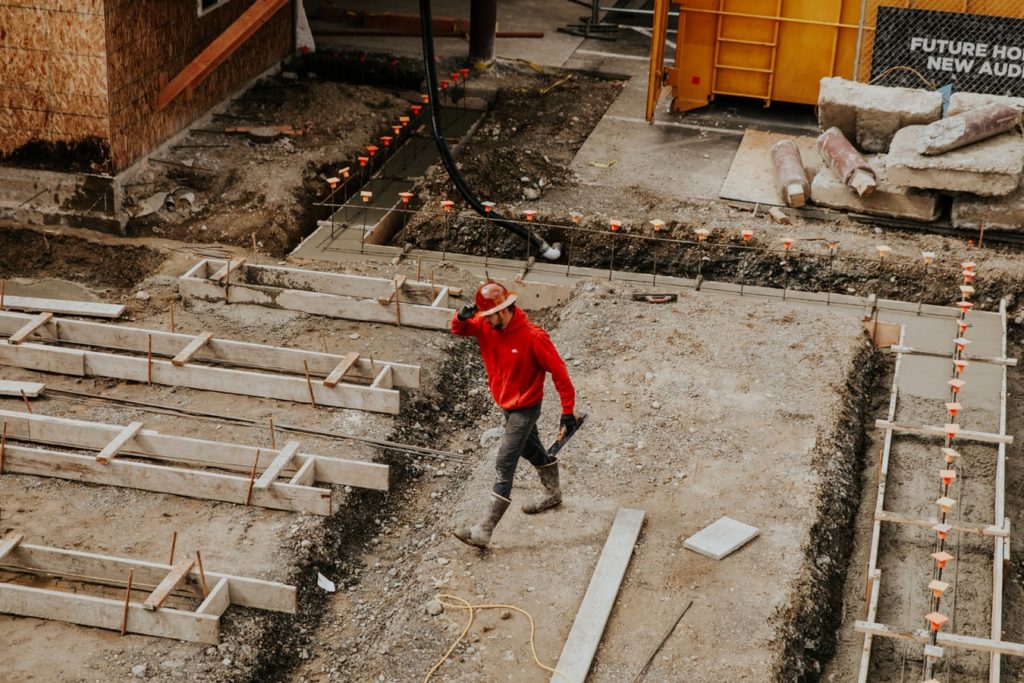Take a set of blueprints, guide a crew with diverse skill sets and responsibilities and create a building that should outlast everyone who built it. That’s the essential role of a general contractor.

You’ll be responsible for the daily management of building and construction contracts, ensuring the work is done correctly, on time and on budget. You’re in charge of the crew and making sure the materials they need for the job are on site and ready to go. You’ll also oversee the work of subcontractors, such as plumbers and electricians, to ensure their work meets the client’s standards.
Client communication is another core responsibility of the general contractor. The “buck” stops with you, whether the project involves new construction from the foundation up, a remodeling job like a new kitchen or an addition to an existing property.
General contractors, broadly speaking, may fall into two groups – those who maintain primarily a management role and those who strap on a tool belt and work alongside their construction team.
You can work for a construction company or go into business for yourself. You’ll have the opportunity to decide if you want to work on commercial or residential projects – or both – if you choose the self-employed route.
If you learn to do your own design work, you’ll have one more service to offer customers, since all construction begins with a set of plans. Most design work today is done with a computer, so you’ll need some technology skills to go with your construction talents.
From start to finish, you’ll begin by talking with clients about their needs, expectations and budget, proceeding to designs and an estimate or bid for the job. Once the bid is accepted, construction can begin by assembling the crew, arranging for the order and delivery of construction materials, and actual work on the job site.
It’s satisfying, fast-paced work with a tangible product to show at the end of every project. If supervising the many moving parts of a construction project sounds fulfilling, read on to learn how you can get started as a general contractor.
In this article you’ll learn:
- How much money you can make as a general contractor
- The required training and certifications
- Professional groups to join
- Employment opportunities for general contractors
- Finding clients
- Plus helpful tips
How much money can you make?
General Contractors (including construction managers) make an average of $43.93 per hour, which works out to $91,370 per year. Experience, local economic conditions and the size of the project are also factors in how much you can charge.
Training and Certification
It’s advantageous to have a bachelor’s degree in civil engineering, architecture, or construction management, but not essential. A degree will set you apart from competitors, although ultimately your track record of performance will just as, if not more, important. What you do need is construction experience and strong leadership skills to succeed as a general contractor. Being able to inspire and motivate your workforce will also prove invaluable as you work hard each day to complete projects to the highest quality standards while staying on budget.

Here’s an extensive directory of general contractor schools and training you can review to determine your best education options.
After completing your training, you’ll need to acquire a license from your state’s licensing board to begin work. Here’s a state by state guide to licensing requirements for a general contractor.

Professional Groups to Join
Joining professional organizations shows you are serious about your career. You can network with other members, learn about job openings, pursue continuing education, stay current in your field and much more by affiliating with a professional association.
Associated Builders and Contractors
American Builders and Contractors is a nationwide association that currently represents over 25,000 construction firms across the United States. Through its 79 chapters, the membership body represents every aspect of the construction field and requires its members to develop professionals and uphold an ethical standard. ABC is involved in governmental regulations, legal advocacy, continuing education, and championing employee benefits.
Construction Management Association of America
Founded in 1982, CMAA offers training and educational opportunities for more than 16,000 members. Individuals, corporations, and construction firm owners from both the private and public sector make up this association, which has nearly 30 regional chapters across the country. Because of its dedication to construction management, it is considered a professional organization that sets the standard for management practices within the industry. Through certifications, conferences, and workshops, members can learn about the new advancements in management procedures.
American Institute of Constructors
AIC is a professional organization aimed at providing training and networking opportunities within the construction industry in America. The institute is dedicated to providing a standard for both individuals and construction firms. Membership is considered a mark of professionalism. Benefits include certifications, access to workshops and conferences, and networking with other professionals within the industry, creating a standard of ethical practice that all members aspire to reach.
Associated General Contractors of America
From building to utility to federal construction, AGC members work all over the country and are bolstered by a strong association that advocates on their behalf. The association offers training and networking opportunities, and supports a political action committee that strives for better standards, both in construction and for members.
Design Build Institute of America
DBIA works on the design-build model, pairing construction managers with designers with a single point of responsibility. This is becoming widespread in the commercial sector and offers both types of professionals the chance to network with each other to build lasting relationships. The institute provides certification as well as conferences and continuing education opportunities.

Employment
When you’re just starting out, you may want to work for a construction company before launching your own business. This way, you earn while you learn.
Send or hand-deliver your resume, copies of your certifications, references and printed photos of your past projects to construction companies where you live. Always follow up with a phone call.
If you don’t have relevant general contractor experience, you may have to work your way up into a supervisory role at a construction company.
Finding Clients
Construction work is expensive. Prices almost never go down, only up. As a result, competition to produce quality work under budget constraints can be fierce. You’ll need to out-think and out-market your competitors. Here are ways to achieve those goals:
Keep in touch with customers
Let your clients know how important they are and how important their opinion is of your services. During and after construction, ask clients how they like the progress as construction is coming along, then ask if they will refer your company to others.
When you finish a project, make sure it is to the client’s complete satisfaction, then ask for an endorsement or online review that you can use on your website.
Get your business listed on directories
Online directories like Angie’s List are increasingly popular ways for customers to find contractors. You can also ask happy customers to give you a glowing review on these sites.
Check the neighborhood while you’re on a job
Chances are, you’ll notice a few buildings that could benefit with some work. You can even check on next-door neighbors to alert them you’ll be doing work on the adjacent house. This sort of courtesy is rare and shows you care. It takes only a minute and it gives you an opportunity to hand out a business card. For icing on the cake, offer them a discount for any work that can be done while you’re already working in their neighborhood.

Targeted Direct-Mail Marketing
Done right, this can be an extremely effective tool for getting your contracting business in front of new customers. You can pick and choose the areas to target by zip code, even by specific subdivisions and streets. Chances are, a subdivision that’s 15-20 years old probably has more than a few houses in need of a new roof, for example.
Sponsor a Lunch-And-Learn
This can be held at a local restaurant or you can have lunch catered at a local hardware or paint supply store as a partnership. No need to make a hard sales pitch. Instead, focus on remodeling trends and projects that add value to a property. This gets you in front of people who are interested in enhancing their property value. While the enticement of a free lunch may seem like a big investment, it will probably be less expensive than generalized advertising to a broad audience. Also, studies repeatedly show that when people receive something of value, like a free lunch, they feel an obligation to return the favor, which translates into more business for you.
Set up payment plans
Once you’re established and generating decent cash flow, you can afford to do construction projects that allow customers to pay over time. This accomplishes two things. First, it expands your potential customer base to individuals who may not be able to afford a project if forced to pay in full at once. Second, you can charge interest on the dollar value, which is essentially a loan.
Good to know:
One of the most important skills a general contractor can possess is being able to bid successfully on projects. If you cannot get your bids accepted, you will not get work.
Software applications are available to plug in the numbers for all aspects of a project, then produce a bid report. Many of these applications come with a free trial. Here’s one example.
While these tools can greatly simplify the task of preparing a written bid, they are only as valuable as the data being entered into them. There’s no substitute for a thorough understanding of construction techniques, knowledge of current pricing on materials, the cost of labor and the estimated time involved to complete any project. The more you can immerse yourself in these details and achieve mastery over them, the more successful you are likely to be in preparing winning bids.
If you enjoyed this article, check out some more great PocketSuite.io content that can help you grow your career as a general contractor. Here’s a great place to start.PocketSuite has thousands of business owners who all started where you are right now. Our community is always happy to help you ramp up, grow your client base, and achieve your income goals, both within the PocketSuite app and as part of our exclusive Facebook Community Group. PocketSuite’s vision is for any professional to be able to work for themselves and make a great living. It starts here. It starts with you. It starts today. Let’s get started, download PocketSuite now! Feel free to reach out with any questions (we’d love to hear from you)! Text us @ (415) 841-2300.





